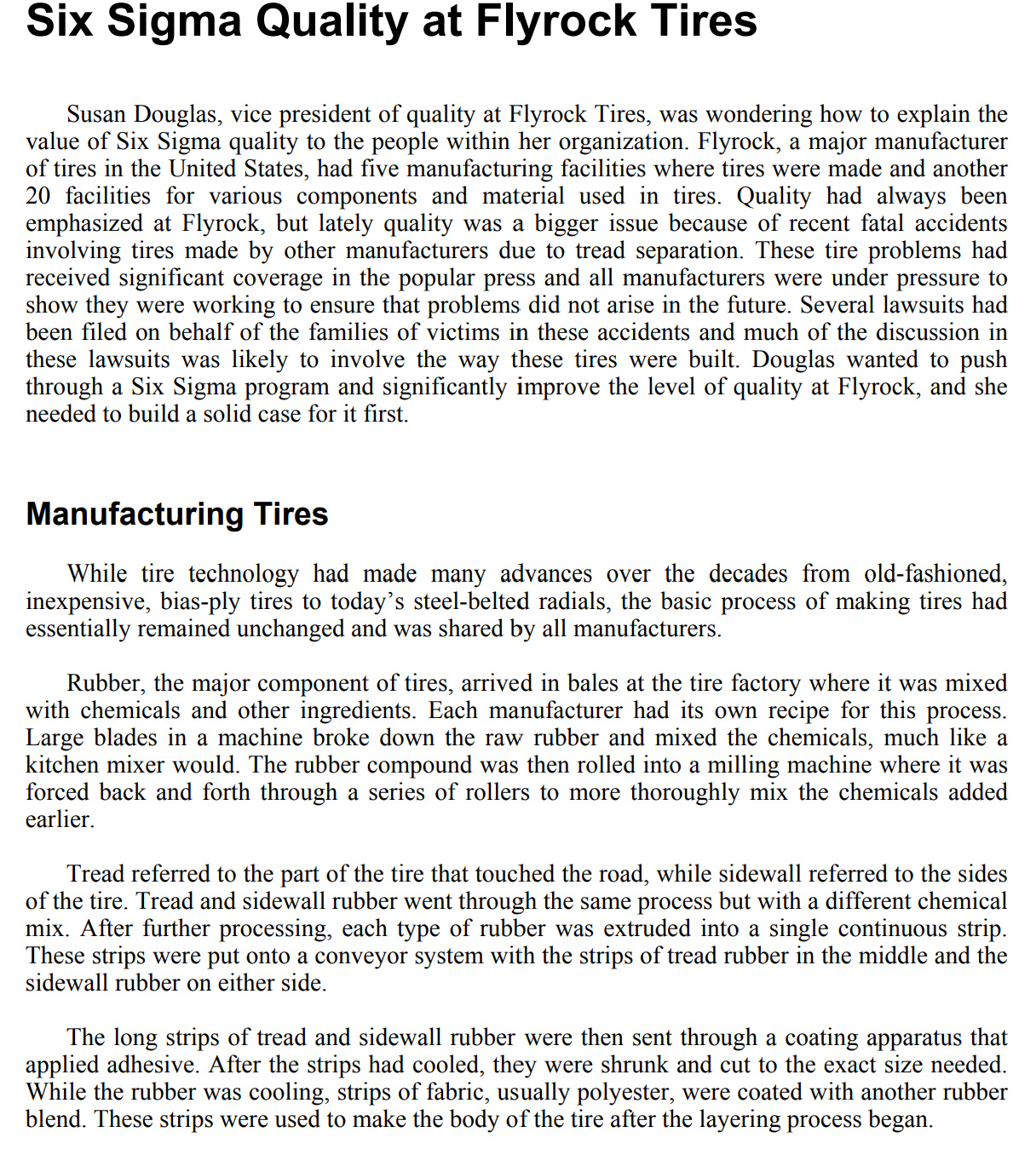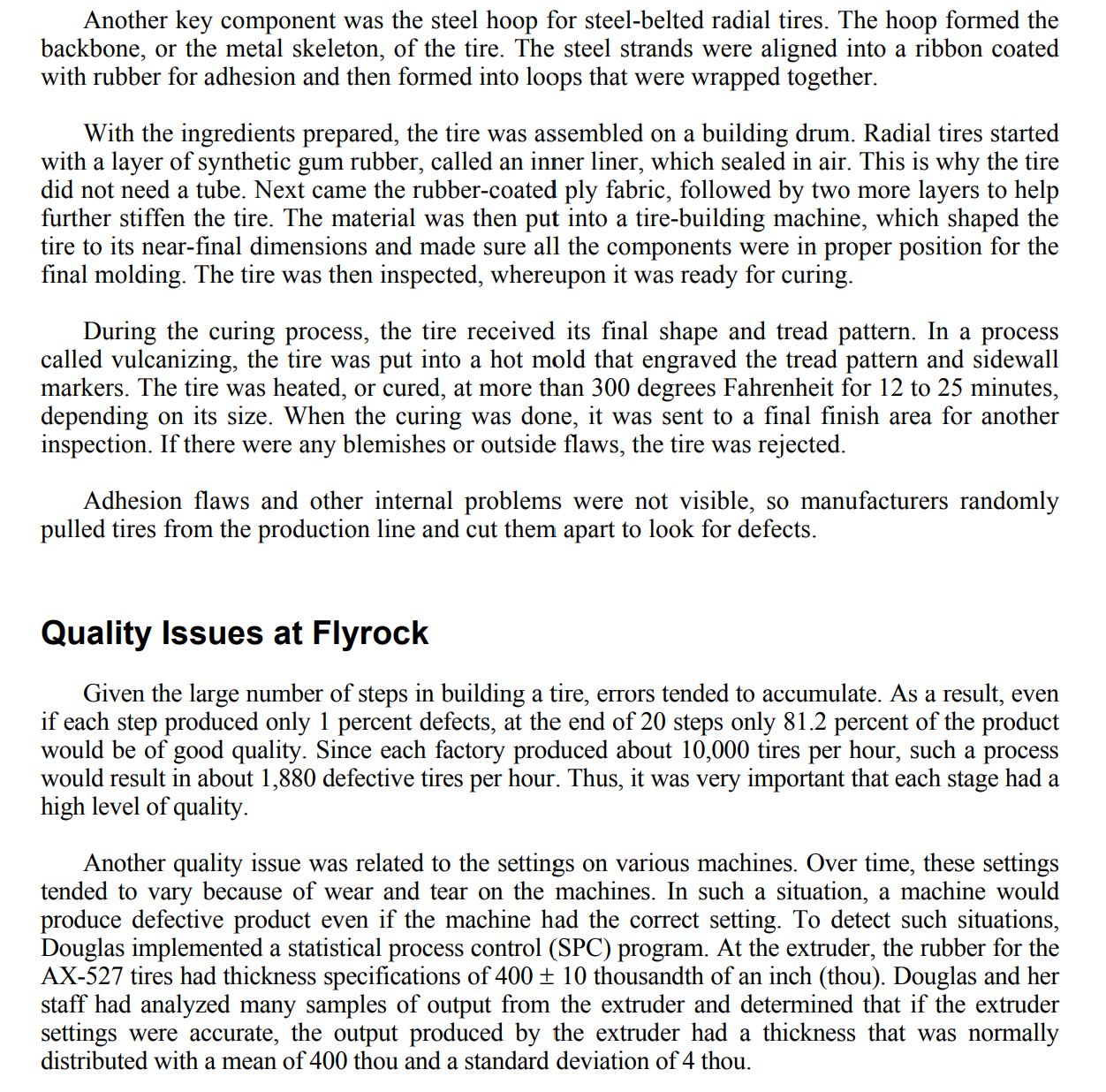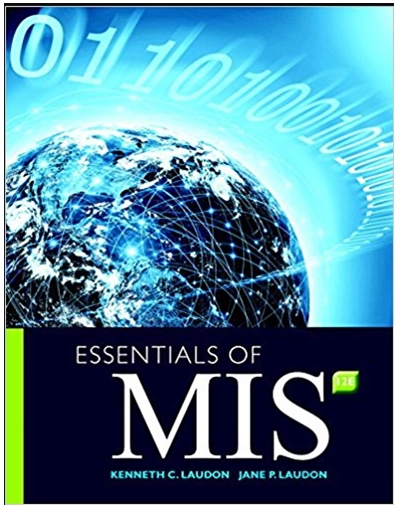- Douglas has asked operations to take a sample of 10 sheets of rubber each hour from the extruder and measure the thickness of each sheet. Based on the average thickness of this sample, operators will decide whether the extrusion process is in control or not. Given that Douglas plans 3-sigma control limits, what upper and lower control limits should she specify to the operators?


Six Sigma Quality at Flyrock Tires Susan Douglas, vice president of quality at Flyrock Tires, was wondering how to explain the value of Six Sigma quality to the people within her organization. Flyrock, a major manufacturer of tires in the United States, had five manufacturing facilities where tires were made and another 20 facilities for various components and material used in tires. Quality had always been emphasized at Flyrock, but lately quality was a bigger issue because of recent fatal accidents involving tires made by other manufacturers due to tread separation. These tire problems had received significant coverage in the popular press and all manufacturers were under pressure to show they were working to ensure that problems did not arise in the future. Several lawsuits had been filed on behalf of the families of victims in these accidents and much of the discussion in these lawsuits was likely to involve the way these tires were built. Douglas wanted to push through a Six Sigma program and significantly improve the level of quality at Flyrock, and she needed to build a solid case for it first. Manufacturing Tires While tire technology had made many advances over the decades from old-fashioned, inexpensive, bias-ply tires to today's steel-belted radials, the basic process of making tires had essentially remained unchanged and was shared by all manufacturers. Rubber, the major component of tires, arrived in bales at the tire factory where it was mixed with chemicals and other ingredients. Each manufacturer had its own recipe for this process. Large blades in a machine broke down the raw rubber and mixed the chemicals, much like a kitchen mixer would. The rubber compound was then rolled into a milling machine where it was forced back and forth through a series of rollers to more thoroughly mix the chemicals added earlier. Tread referred to the part of the tire that touched the road, while sidewall referred to the sides of the tire. Tread and sidewall rubber went through the same process but with a different chemical mix. After further processing, each type of rubber was extruded into a single continuous strip. These strips were put onto a conveyor system with the strips of tread rubber in the middle and the sidewall rubber on either side. The long strips of tread and sidewall rubber were then sent through a coating apparatus that applied adhesive. After the strips had cooled, they were shrunk and cut to the exact size needed. While the rubber was cooling, strips of fabric, usually polyester, were coated with another rubber blend. These strips were used to make the body of the tire after the layering process began. Another key component was the steel hoop for steel-belted radial tires. The hoop formed the backbone, or the metal skeleton, of the tire. The steel strands were aligned into a ribbon coated with rubber for adhesion and then formed into loops that were wrapped together. With the ingredients prepared, the tire was assembled on a building drum. Radial tires started with a layer of synthetic gum rubber, called an inner liner, which sealed in air. This is why the tire did not need a tube. Next came the rubber-coated ply fabric, followed by two more layers to help further stiffen the tire. The material was then put into a tire-building machine, which shaped the tire to its near-final dimensions and made sure all the components were in proper position for the final molding. The tire was then inspected, whereupon it was ready for curing. During the curing process, the tire received its final shape and tread pattern. In a process called vulcanizing, the tire was put into a hot mold that engraved the tread pattern and sidewall markers. The tire was heated, or cured, at more than 300 degrees Fahrenheit for 12 to 25 minutes, depending on its size. When the curing was done, it was sent to a final finish area for another inspection. If there were any blemishes or outside flaws, the tire was rejected. Adhesion flaws and other internal problems were not visible, so manufacturers randomly pulled tires from the production line and cut them apart to look for defects. Quality Issues at Flyrock Given the large number of steps in building a tire, errors tended to accumulate. As a result, even if each step produced only 1 percent defects, at the end of 20 steps only 81.2 percent of the product would be of good quality. Since each factory produced about 10,000 tires per hour, such a process would result in about 1,880 defective tires per hour. Thus, it was very important that each stage had a high level of quality. Another quality issue was related to the settings on various machines. Over time, these settings tended to vary because of wear and tear on the machines. In such a situation, a machine would produce defective product even if the machine had the correct setting. To detect such situations, Douglas implemented a statistical process control (SPC) program. At the extruder, the rubber for the AX-527 tires had thickness specifications of 40010 thousandth of an inch (thou). Douglas and her staff had analyzed many samples of output from the extruder and determined that if the extruder settings were accurate, the output produced by the extruder had a thickness that was normally distributed with a mean of 400 thou and a standard deviation of 4 thou








